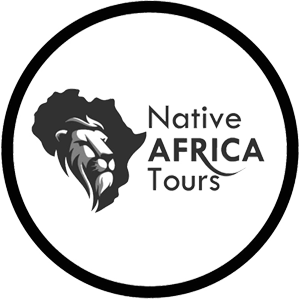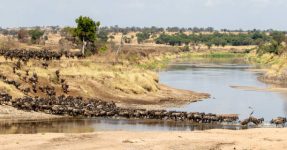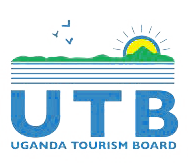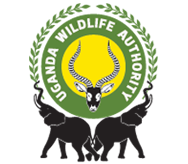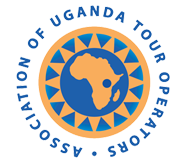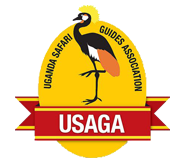When you embark on gorilla trekking, the expectations are always high, and the target is to see gorillas in their habitats. But what if you don’t find gorillas? What happens if you don’t see gorillas on the day of trekking? Failure to see gorillas doesn’t mean the end of it all. Scenarios like these rarely happen, as most destinations promise a 99% chance of seeing mountain gorillas in the jungle.
But just in case it happens that you don’t see gorillas on your gorilla trekking day, an opportunity can be provided, depending on the destination and park authorities in charge. In Uganda, you can have another chance to return to the jungle to track gorillas. Ugandan gorilla safari parks are managed by Uganda Wildlife Authority (UWA). First, your permit is rescheduled to the following day, provided there are available slots. If there are no available slots, it may mean tracking gorillas on another day. But this may come at an extra cost for accommodation in your respective gorilla safari destination.

In Rwanda, the body responsible for rescheduling your permit is the Rwanda Development Board (RDB). In most cases, such scenarios have not been recorded across gorilla destinations, given the higher likelihood they offer of tourists finding mountain gorillas.
Why you may not see gorillas on trekking day
Key factors that may limit your chances of seeing gorillas on the actual trekking day include injury, illness, missing pre-gorilla trekking sessions, fitness challenges, lack of a valid gorilla permit, failure to show up on your gorilla trekking, and others.
Illnesses
One of the main reasons you may not see gorillas on the day of the trek is illness. As per the standards/guidelines for gorilla trekking, no one is permitted to visit mountain gorillas when sick or ill. Visitors with signs of communicable diseases, especially flu or colds, may be denied access to the gorillas at the track. This is to reduce the likelihood that these apes will catch the same diseases.
Injuries
If you happen to have sustained an injury before/during the actual search for gorillas, you may end up not seeing the gorillas. Your gorilla trekking session can easily be cut short, and you return to seek medical attention.
Failure to show up for the actual trekking session
No-shows on the day of gorilla trekking, especially during the briefing, may mean no chance of proceeding with the search to see these apes. The journey to see gorillas begins with a briefing at the respective park sectors. The park official can be present during the briefing session to go through the guidelines, allocate you a ranger guide, and assign you a gorilla group.
If you have no gorilla permit
A valid gorilla permit is what lets you engage in a gorilla trekking adventure. Without a license, your chances of embarking on the trek to see gorillas are minimal. The gorilla permit is a must-have and should be obtained in advance. Booking a gorilla permit shouldn’t be a challenge for you. Contact Native Africa Tours to reserve your permit in advance. Do not wait until the last minute, as that often leads to challenges given the high demand.
Abrupt disruption from rain
During the rainy season, visitors’ trekking sessions can easily be disrupted. The rainy seasons/months occur in March, April, and May, whereas the shorter wet months fall in October and November. The wet or rainy season receives the heaviest rainfall of any period of the year. Rains can start at any time of the day, and early preparation is required.
Level of fitness –a leading contributor
The visitor’s chances of seeing gorillas are highly influenced by their fitness level. You need to be fit to manage a round gorilla trekking adventure. Gorillas tend to travel long distances to find food.
What increases your chances of seeing gorillas?
Habituation process
Visiting already habituated gorilla groups increases your chances of seeing gorillas in the wild. The habituated gorilla families are already used to human presence, making it easier for tourists to explore them at a safe distance. First, they undergo training when they are initiated to get familiar with human presence. A fully habituated gorilla group takes 1-2 years of training and is only opened for trekking when it is ready.
Over 25 groups have been fully habituated and opened for gorilla tourism in Uganda. They include Oruzogo, Binyindo group, Rushegura gorilla family, Katwe, Muyambi, Happy gorilla group, Mukiza group, Bitukura, Tindatine family, Kutu, Bweza gorilla group, Mishaya, Nshongi, Nkuringo gorilla group, and many others.
Presence of guides/trackers
Park ranger guides and trackers play a crucial role in increasing your chances of spotting gorillas in the wild. Uganda, Rwanda, and Congo have experienced ranger guides and trackers who accompany guests on a trek to see mountain gorillas.
Where the gorilla group is found
The location of the gorilla group significantly affects your chances of seeing them. Gorilla groups live in different sectors, and in Uganda alone, they can be trekked in the Rushaga, Buhoma, Ruhija, Ntebeko, and Nkuringo regions.
Can I get a refund if I don’t see gorillas on the day of the trek?
Specific terms and conditions apply if you are to be refunded the price you paid for the gorilla permit.
2024-26 Gorilla trekking permit rates
A valid permit is essential for gorilla trekking in Uganda or Rwanda. Obtaining your permit is easier when you book through a trusted gorilla tour company like Native Africa Tours. Booking gorilla trekking permits is restricted to persons aged 15 or older. In Uganda, visitors can obtain a license for USD 800 per guest per day (for non-residents). The rest of the categories, including Ugandans/East African citizens, pay UGX 300,000, & the foreign residents’ gorilla permit fee is set at USD 700 per person. Rwanda gorilla permits, as of 2025, cost USD 1,500 per person and are valid only for single-day gorilla trekking sessions.
The Best Time to go for African Gorilla Trekking Safari
To experience the best of Uganda/Rwanda gorilla adventure, you should consider travelling to your dream destination at the right time. Timing is essential for any successful gorilla trekking tour in Africa. The two dry seasons are the best time to book and enjoy a memorable gorilla trekking adventure. The extended dry season runs from June to February, while the shorter dry season runs from December to February.
Gorilla trekking safaris can also be arranged during the wet or rainy seasons, that is, from March to May or from October to November. The challenge that you may experience during the wet or rainy season or months. But it is generally the low season, a perfect time to visit Uganda/Rwanda on a budget or as a backpacker.
What to carry for a day trek with mountain gorillas
Checklist of items to pack for gorilla trekking tour includes long trousers, insect repellents, thick socks, a pair of gardening gloves, strong walking shoes or boots (waterproof), a rain jacket or poncho/raincoat, long-sleeved shirts, a safari hat, a daypack, a camera with additional batteries, and others.
How to see Uganda/Rwanda gorillas
Gorillas in Rwanda can be spotted, provided you have secured a gorilla trekking slot. Book your gorilla safari experience through a reliable tour company on the ground. Talk to Native Africa Tours to book a memorable gorilla trekking safari. Explore Uganda, Rwanda, and Congo—the iconic destinations in Africa—where guests have a higher chance of encountering mountain gorillas.
